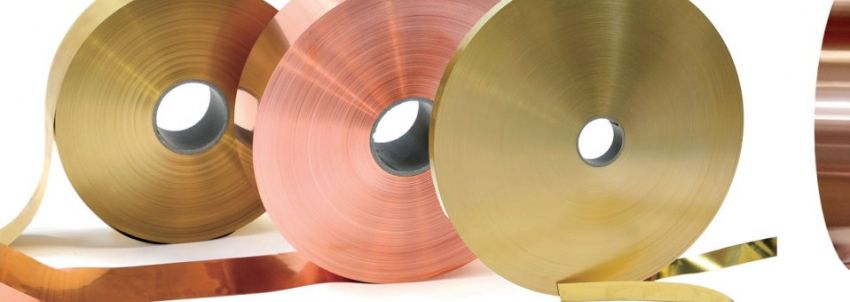Chrysocale
Generalities about bronzes and Chrysocale
Originally, the term bronze was used only for copper and tin alloys.
By extension, the term also applies to ternary copper-tin-zinc alloys.
Bronzes have excellent corrosion resistance, a good coefficient of friction ensures good wear resistance and high mechanical properties.
This, together with their interesting electrical properties, naturally make them suitable for the manufacture of all springs, rings, washers and contacts for both the electrical and mechanical industries.

Bronze Chrysocale - CUSN3ZN9
Tin is largely responsible for the remarkable mechanical properties of bronze. However, the fact of substituting, in part, zinc for this element, very significantly improves the electrical conductivity while maintaining good mechanical properties and reduces the price of this alloy. Chrysocal Bronze / CuSN3Zn9 is gentle on cutting tools.
This explains the wide use of this ternary Cu Sn 3 Zn 9 alloy called chrysocale.
Usage properties of Chrysocal Bronze
| Hot deformability | Low |
| Cold deformability | Excellent |
| Cold reduction before annealing | 90% max |
|
Machinability (Basic reference: brass from
bar turning CuZn39Pb2 =100)
|
20 |
| Soft soldering | Excellent |
| Hard soldering | Excellent |
| Arc welding in a gaseous atmosphere | Good |
| Arc welding with coated wire electrode | Medium |
| Electric resistance welding : | |
| Per point | Good |
| Placed end to end | Excellent |
| Corrosion resistance : | |
| Acids | Medium |
| Sea water | Good |
| Marine Atmosphere | Excellent |
Chrysocale: chemical composition and characteristics
| Chemical composition in % | Physical characteristics (at 20°C) | ||
| Sn | 2.0 - 4.0 | Density (kg/dm3) | 8.8 |
| P | 0.01 - 0.40 | Electrical conductivity (%IACS) | 24 |
| Zn | 7.5 - 10.0 | Electrical resistivity (MS/m) | 7.2 |
| Ni | 0.2 max | Thermal conductivity (W/m.K) | 84 |
| Fe | 0.1 max | Modulus of elasticity (Kn/mm²) | 120 |
| Total other impurities | 0.2 max | Coef. of thermal expansion (10-6/K) | 18 |
| Cu | Remains | Melting temperature (°C) | 925 - 1030 |
| Shear modulus (kN/mm²) | 41 | ||
Phosphor Bronzes (CUSN4 / CUSN6 / CUSN8 / CUSN9P)
The presence of phosphorus, which is necessary for the proper processing of copper-tin alloys, has given them the name phosphor bronze, which is commonly used.
Although the modulus of elasticity of these bronzes varies little, their mechanical characteristics and in particular their resistance to fatigue increases with their tin content, while their electrical conductivity decreases.
Supplier of Chrysocale and phosphor bronze
Do not hesitate to contact us for more information on phosphor bronzes or to place your order for Chrysocale.
Other bronze alloys that we propose you to order : CuSn8 ou CuSn9P - CuSn6 - CuSn4